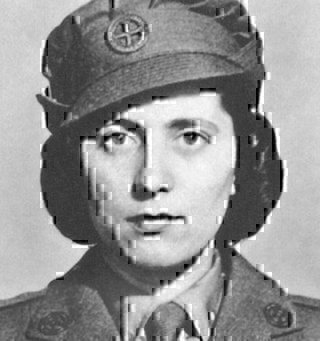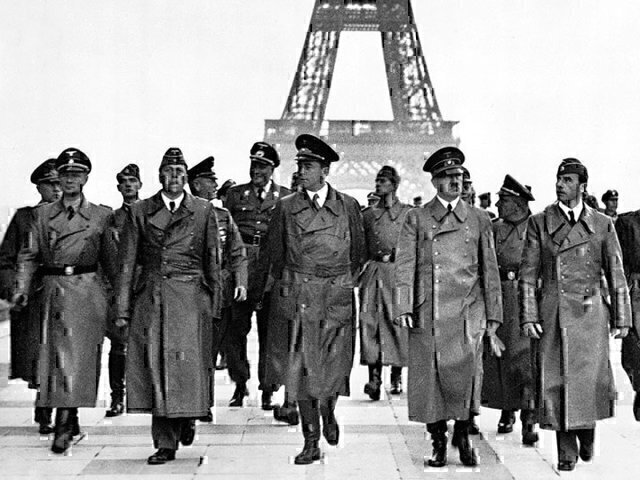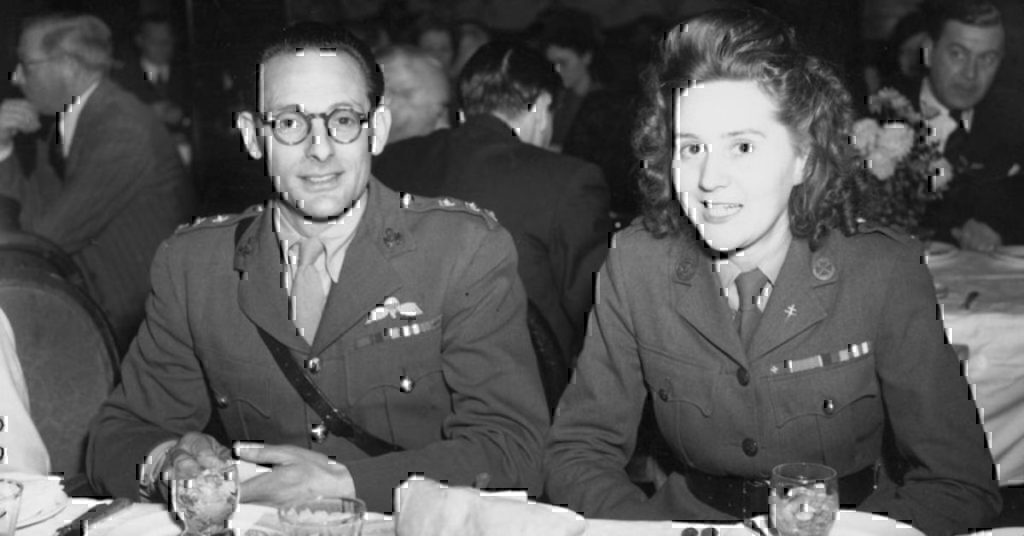From BusinessInsider.com
It has been 75 years since upward of 150,000 Allied troops began storming the beaches of Normandy by air, land, and sea. As the June 6 anniversary of the largest amphibious assault in military history approaches, journalist Sarah Rose illuminated several less widely known combat heroes who fought for the liberation of Nazi-occupied Europe in Operation Overlord: Andrée Borrel, Lise de Baissac, and Odette Sansom. They are among the 39 female agents who served in the Special Operations Executive (SOE), British Prime Minister Winston Churchill’s secret World War II intelligence agency created in 1940 to “set Europe ablaze.”
“Women are the hidden figures of D-Day,” says Rose, who started researching the history of women in combat and was surprised to learn that their roles dated back to World War II. “People tend to think women were ‘just’ secretarial couriers and messengers. No, there were female special forces agents on the ground and working to keep the Allies from being blown back into the water. They did what men did. They led men.”
In her new book, D-Day Girls: THE SPIES WHO ARMED THE RESISTANCE, SABOTAGED THE NAZIS, AND HELPED WIN WORLD WAR II, Rose chronicles three of these agents’ contributions to the Allied victory in Normandy and the liberation of Western Europe.
Andrée Borrel, the first female combat paratrooper, fought for the liberation of France until Nazis executed her a month after D-Day.


Born to a working-class family on the outskirts of Paris after World War I, Borrel left school at 14. She had a job at a Paris bakery counter when World War II broke out.
Once the war began, Borrel left Paris and took a crash course in nursing with the Red Cross.


After a stint treating people wounded by the German Army, she joined a group of French Resistance operatives organizing and operating one of the country’s largest underground escape networks, the Pat O’Leary line. She aided at least 65 Allied evaders (mainly British Royal Air Force airmen shot down over enemy territory) on their journeys out of France to Spain through the Pyrenees.
When she herself got ratted out, she escaped to Lisbon, Portugal. She then moved to London, eager to continue fighting for the liberation of France. In the spring of 1942, the SOE recruited her. She was trained not only to jump behind enemy lines, but also to spy on, sabotage, and kill Axis troops occupying her home country.
Borrel parachuted into France in September of 1942, becoming the first female combat agent to do so. She worked as a courier for the SOE network Physician (nicknamed “Prosper”), which raised bands of Resistance members in the north to carry out guerilla attacks against Nazi troops. Moving between Paris and the countryside, she coordinated aerial supply drops and recruited, armed, and trained Resistance members.
She rose to second in command of the network’s Paris circuit, which was also funneling enemy intelligence back to the Allies in London. She was in the SOE’s first training class for female agents, where she learned skills from hand-to-hand combat to Morse code. When asked, “How might you kill a Nazi using what you have on you?” she is said to have responded: “I would jam a pencil through his brain. And he’d deserve it.”
Her commanding officer described her as “the best of us all.”
The Nazis arrested Borrel in 1943 and sent her to a concentration camp.
Nazis, allegedly leveraging intelligence from a double agent, arrested Borrel and fellow Physician leaders in June 1943. After being interrogated and imprisoned around Paris, she was transferred to the Natzweiler-Struthof concentration camp in July 1944 with three other female SOE agents and executed a month after D-Day.
Even from prison, she is said to have continued fighting by inserting coded messages about her captors in several letters to her sister. She was 24.
Honors: Croix de Guerre, Medal of the Resistance, the King’s Commendation for Brave Conduct
Lise de Baissac parachuted into France twice and became the No. 2 commander of a French Resistance group fighting Nazis during the Battle of Normandy.
Records of Special Operations Executive
Andrée Borrel was the first female SOE agent to parachute into France during World War II, but her jumping partner, 37-year-old Lise de Baissac, was right behind her. The daughter of a wealthy family in British-ruled Mauritius, de Baissac was in France when Hitler’s troops moved into Paris in 1940. She fled to the south and then to London. When the SOE started recruiting multilingual women as agents, she joined the fight.
After parachuting into Central France with Borrel, de Baissac set up an Allied safe house for agents in the town of Poitiers in western France, selecting an apartment near Gestapo headquarters — a hiding-in-plain-sight strategy she felt would arouse less suspicion.
She bicycled around occupied territory as a liaison among different underground networks, often riding 60-70 kilometers a day and carrying contraband. On one occasion, a Nazi stopped her and her clandestine radio operator, patting them down. The officer searched them for guns, which they didn’t have, so he let them go. She’d later report that a radio crystal fell out of her skirt as she was leaving but that she leaned over, grabbed the crystal off the ground, and pedaled on.
In August of 1943, when her network in Poitiers was blown, the SOE airlifted her back to England by Lysander aircraft. She trained new female SOE recruits in Scotland. In April of 1944, after recovering from a broken leg, she jumped back into occupied France. She made her way to Normandy, joining her brother, fellow SOE agent Claude de Baissac, in leading a network of Resistance fighters in Normandy. They carried out attacks to weaken Nazi communication and transporation circuits, strategically cutting phone lines and blowing up roads, railways, and bridges to hinder the movement of German reinforcements Hitler was ordering to the beaches.
De Baissac raced out of Paris to assist the allies when she learned D-Day was imminent.
Imperial War Museum
On June 5, 1944, de Baissac was in Paris recruiting when she learned D-Day was imminent. She biked for three days, speeding through Nazi formations, sleeping in ditches, and reaching her brother and their Resistance circuit headquarters in Normandy.
As the bloody Normandy campaign raged and the Allies struggled to penetrate the Axis front, the de Baissacs continued leading espionage and sabotage operations. They gathered intelligence on enemy positions and transmitted messages back to England, helping lay the groundwork for Operation Cobra, the Allied breakout in which U.S. Army forces came out of the peninsula and pierced Hitler’s front line seven weeks after D-Day.
After the war, she worked for the BBC.
Honors: MBE, Chevalier de la Légion d’Honneur Croix de Guerre avec Palme
Odette Sansom blew up Nazi train lines and, upon being arrested and tortured, told Gestapo officers: “I have nothing to say.”
Imperial War Museum
Odette Sansom was a 28-year-old homemaker in Somerset, England when she answered the British War Office’s call for images of the French coastline, offering photographs she had from her childhood. Born in France as “Odette Brailly” in 1912, she had lost her father in the final months of the World War I. With World War II raging and her English husband already away fighting in the British Army, she didn’t take lightly the decision to leave her three young daughters. But with Hitler already occupying her old home and threatening her new one, she felt compelled to join the fight.
She was tough, determined, and persistent. When a concussion during parachute training left her unable to jump into France, she docked in Gibraltar on a gunrunner disguised as a sardine fishing boat, only to arrive in France’s “free” zone the same week in November 1942 that Hitler’s forces began occupying the region. So began several months working as a courier in SOE agent Capt. Peter Churchill’s network, Spindle. Churchill relied heavily on her to set up clandestine radio networks, coordinate parachute drops, and arm Resistance fighters in the Rhône Alps in preparation for D-Day.
She and Churchill fell in love and continued working together mobilizing Resistance members in southeast France until April 1943, when the Gestapo arrested them. Knowing that they were at risk of being executed as spies, she convinced their captors that her commanding officer was a relative of UK Prime Minister Winston Churchill and that she was his wife and only in France at her urging. Peter Churchill was not, in fact, related to Britain’s prime minister, but Sansom figured that if she could trick the Germans into thinking they were VIPs, there would be incentive to keep them alive.
Sansom emerged from the largest, most lethal women’s concentration camp in history with evidence used to convict its leaders of war crimes.
Getty Images
While Sansom was imprisoned around France and then at Ravensbrück concentration camp, enduring solitary confinement and somewhere between 10-14 torture sessions – she survived.
By the time Ravensbrück was evacuated in the spring of 1945, Sansom’s back was broken, and she had been starved and beaten, with her toenails pulled out and her body burned in attempts to get her to reveal information about her fellow agents. She is said to have revealed nothing.
In the years after the war, Sansom’s testimony was later to convict Ravensbrück camp commandant Fritz Suhren, as well as other SS officers, of war crimes. Nazi Germany’s unconditional surrender on May 8, 1945 came less than a year after the sweeping invasions that began the Battle of Normandy, now memorialized as “D-Day.”
Honors: George Cross, Member of the Order of the British Empire, Chevalier de la Légion d’honneur
This article originally appeared on BusinessInsider.com.

